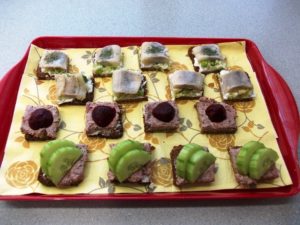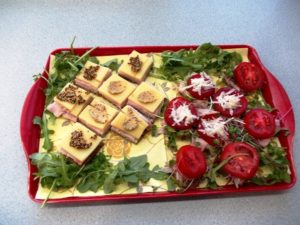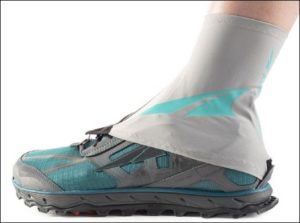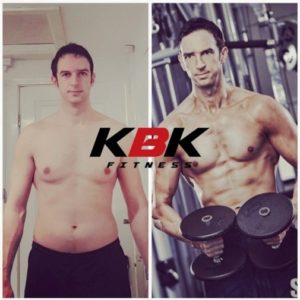In this issue:
What’s for lunch? A low (or no) cost workout option. What’ll stop the rain? I know you disagree! Holiday survival. A forgotten muscle group. Don’t worry about the things you can’t control. The gratitude journal.

What do Christmas and Denmark have in common with Your Editor? Photo by Paul Hanaoka on Unsplash
Help spread the news!
Our next issue will be on Wednesday January 19, 2022. In the meantime please tell all your colleagues and friends about FitITproNews and its companion newsletter WServerNews, and let them know that they can subscribe to these and other TechGenix newsletters for free here. Thanks!!
Send us your feedback!
Got feedback about anything in this issue of FitITproNews? Email us!
What’s for lunch? (Mitch Tulloch)

Mitch Tulloch is the Senior Editor of FitITproNews and a recovering fat IT pro who lost 50 lbs in midlife and is now on his way to becoming a fit IT pro. Mitch is a widely recognized expert on Windows Server and cloud technologies who has authored or been Series Editor of numerous books/ebooks from Microsoft Press. Mitch is also the Senior Editor of WServerNews and writes frequently for TechGenix.
Back in our October newsletter I shared about my recent progress in losing 20 lbs over a period of about 9 months. I had been struggling with trying to accomplish this for several years, and it was only after reading and applying the principles outlined by Dr. Layne Norton in this article on GymShark that I finally achieved some success in losing this excess weight. (I still want to lose at least another 10 lbs though, which is why I said I had achieved *some* success in losing weight.) In his article Dr. Norton describes five key strategies to follow if you want to lose—and keep from regaining—significant weight:
- Make it a lifestyle
- Track your food intake and know your ‘maintenance calories’
- Get enough protein and fibre
- Choose a breakdown of carbohydrates and fats that you enjoy and can adhere to
- Don’t sweat the small stuff
My October editorial dealt in part with the idea of altering my lifestyle more towards moderate, occasional exercise and a balanced diet of between 2,500 and 3,000 calories per day. That basically covers principles one and two in Dr. Norton’s list above and it also gives me some idea of my caloric maintenance level. By following the method of calculation in his article, my loss of 6 lbs (2.7 kg) during the last 4 months (120 days) of the period graphed translates to approximately 2.7 x 6000 = 16,200 excess calories burned in 120 days equals 135 calories/day. And since my average caloric consumption during those 4 months was about 2800 calories, this means my caloric maintenance level is about 2,935 or let’s just say 2,900 cal/day. More or less, anyways.
So as long as I eat under 3,000 calories per day, I shouldn’t gain any significant weight.
But what should I eat? That’s where Dr. Norton’s fourth principle comes into play. In other words, I need to follow a diet that I can adhere to in the long-term, one that I can basically be happy following forever.
Now that initially seemed like a challenge. But then I decided to take a chance and alter my diet as follows.
First, I settled on a basic early breakfast routine (I wake up around 5 am) consisting of a large glass of water with True Lemon added to it followed by a banana (for potassium) and two hard-boiled eggs (got the idea from some French movies from the 60s) and a few brazil nuts (for selenium to boost testosterone).
Then later in the morning I began religiously eating a big bowl of raw veggies—carrots, cucumber, celery, snap peas and tomatoes—partly for their nutritional benefit but also because they taste good. Having weaned myself away from most processed food a few years ago, I rediscovered the tastiness of vegetables, especially those that can be eaten raw. (But I don’t like eating salads, that’s rabbit food.)
Then I took advantage of a new hobby I learned when the pandemic arrived and lockdowns/restrictions made eating at restaurants frustrating or even impossible. I’m talking about my new found love of cooking as a hobby, and especially Danish cooking. And no, I’m not Danish, but I had to start somewhere and jumping into gourmet French cooking would probably only end up leaving me discouraged at my inability to make a passable béchamel sauce.
So I pretended I was Danish and started learning how to make Smørrebrød—and a whole world of fun ideas and combinations suddenly presented themselves to me. For example, when Ingrid’s birthday came around we invited family over and I made a bunch of small Smørrebrøds for our guests. Here’s one plate for example that shows herring with sour cream and scallions and pate with either pickled beets or cucumber, both on German Vollkornbrot since I haven’t gotten up enough courage yet to try and bake my own Danish Rugbrød (rye bread):

And here’s one more tray to get your mouth watering, this one shows ham and cheese with Dijon mustard on the left and ham and tomato with radish greens on the right:

I got some of these ideas from a terrific book by Trine Hahnemann which you can find on Amazon:

And recently I decided to take a chance and graduate to laying out a nice Smörgåsbord for some family and friends to celebrate First Advent over at our place:

The centerpiece is a platter of Norweigian Fjord Smoked Steelhead Salmon and it’s surrounded by salami, herring in sour cream, pickled onions, pate, various cheeses, olives, and breads and crispbreads.
And with all this I’ve still managed to continue gradually losing excess weight with a few minor ups and downs. The trick? I’m happy eating the way I am currently eating because my diet is fun and consists of things I like to eat and it has enough variety that it keeps me from getting bored and tempted to eat just to fill my stomach. Needless to say this benefits Ingrid too since it means I’ve now taken on a larger share of the cooking for us!
The essence of my approach is that my diet seems sustainable—hopefully. Actually, I expected it to change over time, and in fact several weeks ago I stopped eating a big bowl of raw veggies every morning because it’s winter now and somehow they just don’t taste as good as they did during the summer and fall. And for a while I went all out on Smørrebrød but now I usually only eat one or maybe two per day and am working on learning other interesting recipes, of course with a few failures too.
Now I’m not saying my “sustainable diet” approach is the only way or best way to lose weight and/or keep it off. For example when you read Andrey’s article in this issue you’ll find a very different (and quite valid because it works as I can testify) approach to eating for the purposes of weightloss and weight maintenance. But I’ve decided to try my current dietary scheme because I think it’s an approach to eating that I can see myself adhering to indefinitely, which is what Dr. Norton recommends as part of his weightloss/weight maintenance strategies. Anyways, I’ll let you know again next summer how it’s going.
In the meantime, now that this issue of FitITproNews is almost ready to go to press, a very important question comes to my mind:
What’s for lunch?
A low (or no) cost workout option (Sarah Trammell)

Sarah Trammell is an application analyst at a university in Georgia. She became interested in health and fitness issues when she began making diet and lifestyle changes to lose weight back in 2007 and learned even more when trying to track down what to do about other health issues beginning in 2011 with not much input from doctors. You may follow her blog at ihatemyglutenfreelife.com.
I recently discovered an easy, and for me cost-free, option to add variety to my daily workouts. Plenty of people are probably already aware of this option, but I didn’t even think about it until recently. I’ve enjoyed taking advantage of it and doing new workouts.
I love my DVD workouts, but one day, as I was trying to pick one to do, I thought I would see which workout apps were available on my streaming device, just to try something different. I tried searching the app store on it and didn’t really see anything that stood out. I then thought about my Sony Blu-Ray player. It came with a good number of pre-installed apps, but other than the few major ones on it, I didn’t pay attention to them. I figured they wouldn’t be worth much, if anything at all. I decided to see what was on it and saw a category for sports/fitness. I opened an app under it called FitYou and saw quite a few workout options. There were workouts of varying lengths. I’ve seen some as short as four or five minutes and others as long as an hour. The vast majority that I’ve seen contain a mix of strength and cardio. Since I began checking out the app, I’ve done a different workout from it almost every day. I’ve really enjoyed doing something different for a change. My DVD workouts are great and provide plenty of variety, but that day, I was just wanting something different, and my Sony Blu-Ray player gave me quite a few workouts for free. I didn’t have to sign up for an account or pay for any sort of subscription to use them.
If you’re looking for more variety for your workouts, you may not need to look further than your Blu-Ray player. Different models probably have different apps on them. Other Sony Blu-Rays may not have the FitYou app but may have another that is similar. I have the BDP-S3700 (https://www.amazon.com/Sony-BDPS3700-Streaming-Blu-Ray-Player/dp/B01AT6B0DK) and the BDP-S1700 (https://www.amazon.com/Sony-BDPS1700-Streaming-Blu-Ray-Player/dp/B01AT6B14S/) and they both have the FitYou app. Even if you need to buy a Blu-Ray player, the ones that can stream aren’t terribly expensive. Boot up your Blu-Ray player to see what’s available, or consider buying one with one or more fitness apps that you can use for free!
What’ll stop the rain? (Kris Lall)

Kris Lall works as a product manager in the tech industry for an enterprise software manufacturer. As a youngster, Kris was consumed with soccer before technology came along. Now he’s consumed with both. You can find him on Twitter at the not-too-surprising handle @krisoccer.
Those of us “sheltering in place” in the U.S.’s Pacific Northwest region as the next major storm rolls in and further disrupts our daily lives are trying to keep life as normal as possible through the dark days of winter. We had been enjoying a long streak of sunny weather in the summer and I recall kidding that we were ready for a little precipitation as we headed into fall. Well, ~19 inches of rain later, I can confidently proclaim that fall really delivered!
Fall had barely gotten started and the region quickly transitioned from record high temps to wind speeds of 50 miles per hour, sideways rain in buckets, and biblical flooding. Next year I’ll be keeping my mouth shut about too many days of sunshine! One upside to this is that we all now know whether our domiciles are leakproof.
If you have an exercise routine that takes you out into the elements like I do, you either have to come up with an exercise routine to replace your current outside one or figure out how to continue the outside routine. For my daily jog, I typically dress in standard canvas sneakers, shorts, and a t-shirt. But when the weather turns and it starts to get cold, I might throw on a sweat jacket that I can remove when I get too warm. If it’s raining, I throw on a rain jacket and call it good and make do with the equipment I have (shoes, shorts, shirt, jacket, hat) and use it for both good and inclement weather.
The latest weather pattern, however, has motivated me to see if any compelling products are available to assist us outside exercisers better deal with the elements, and this translates to keeping me dry without overly impeding my ability to jog.

Figure 1: Bulky rain boots keep feet dry, but don’t make the best jogging shoes!
First and foremost, I’m looking for a shoe made of material that stays dry, has traction on slick surfaces, and prevents water from entering at the top of the shoe. If you google “waterproof running shoes”, you’ll find plenty of waterproof running shoes and socks. Further, choosing the right tread type can ensure the sole has the traction qualities necessary for the conditions in which you plan to run. Experts recommend deep lugs with stickier rubber in the cold and wet and spiked treads for ice. Moreover, gaiters can be a great option to prevent rain water from entering the shoe at the ankle by fitting snuggly over socks and the top of the running shoe.

Figure 2: Gaiters take moisture prevention to the next level when running in the rain.
Another tip is that running equipment is going to get wet no matter what – at least if you’re in a geographic location with wet and/or freezing weather conditions – so be sure to bring it all inside and put it somewhere to dry so it’s ready to use for the next time.
In summary, it’s important to make our exercise routines a year-round experience, and not allow Mother Nature’s inclement weather policy to give us an excuse for avoiding our exercise. The good news is that plenty of solutions to this particular problem are readily available, and while we may never know who’ll stop the rain, we now know what’ll stop the rain.
References:
https://www.nike.com/gb/a/choosing-winter-running-shoes
https://www.rei.com/product/150528/altra-trail-gaiters?sku=1505280003
I know you disagree! (Andrey Sarantsev)

Andrey is 62 years old and resides in Russia, Moscow. He is a former scientist at Moscow State University (Physics) and has worked for IBM as an IT Architect for the last 18 years. He was dedicated to Shotokan karate in his early years, then later practiced bodybuilding and now plays tennis and exercises with not-so-heavy-weights just to be in good shape.
Yes, I know this, because I have not yet met a person who would agree with me on that. I like to preach this idea, if only because I believe in it myself. And sometimes they even listen to me with interest. But then they accuse me of extremism and lack of a balanced view of life. So what am I talking about? About pleasure.
Let’s be specific – for a start it will be the pleasure of eating. If you have no problems with being overweight, you are slim as an Apollo, or failed to win Mr. Olympia just because you were not warned in time about the deadline for applying for participation – this part is not for you. It’s for people like me – for those who don’t have to eat a lot to get fat. It’s enough to see how others eat pizza. Alas, this is our genetics. But damn it, why can others enjoy tasty food, and we have to limit ourselves?
Stop! Tasty food? Is it good? The food itself is not necessarily tasty. For example, today I ate green bean pods (35 kcal per 100 g) without salt and ketchup and protein from boiled eggs. I cooked 4 eggs, threw out the yolk and left only the protein (by the way, the protein of chicken eggs has an excellent amino acid profile). It was hard to call such food tasty, but I’ve been used to it for a long time. But it doesn’t happen every time, does it? The restaurant will bring you food that is specially made to be delicious. And your spouse will cook you a delicious food so that you have fun. Even a simple hot dog, hamburger and kebab are tasty. And that could be a problem. We cannot control all the moments of our behavior all the time, we are not hung with sensors, telemetry from which is sent to the mission control center. We are not always rational. Most likely, we will eat delicious food more than we need to saturate and continue an active life. We will be ruled by pleasure. And it – the pleasure of delicious food – is unlikely to help the movement from XXL to M.
What to do? Try to become policy driven (we, as IT Pro, will understand this approach, won’t we?), follow the “I avoid delicious food” policy. At least at the stage when you are trying to remove too much weight gained and return to the equilibrium point around which you live (or will live), fluctuating slightly around it. And then you will need both spirit and mind. You will have to strain your spirit every time you see delicious food, but in order to eat tasteless food, you need to know in advance what you include in such a diet. And the products for this must be bought in advance, restaurants, canteens or fast food do not sell this. Tip – try simple products, without complicated recipes. Stewed or even raw cabbage, egg white, boiled meat without sauce, cucumbers. I recently discovered raw broccoli – it is quite possible to eat it without ketchup or sauces. Boiled turkey and raw cabbage. Against this background, raw carrots will seem like a sweet dessert to you. How do you like it? Tasteless? Yes. But you want to lose weight, don’t you?
Listen, you’re not interested in whether the gas tank and the engine will get pleasure from the fact that you pour gasoline into your car? You are interested in the quality of fuel, that’s for sure. So try to look at the nutrition process the same way. The quality of the food is very important. But not the taste. By the way, I mentioned pleasure. And this topic may be interesting not only to us, former or present Fat IT Pro, but also to those who have never asked in the store “where do you have large sizes?” Pleasure – well, what’s wrong with that? Yes, nothing in general, but it depends on the quality of this pleasure. For example, an ordinary person, not a professional, is engaged in bodybuilding. He regularly goes to the club and does exercises, trying to improve his body. After training, he comes home and feels physical pleasure. In the morning he wakes up, his muscles hurt (familiar?), but he does not suffer from this pain, this pain is pleasant. Or, for example, you play tennis, the opponent is stronger than you, but you win because you have surpassed yourself, you have overcome your insecurity, your stiffness. You feel satisfied. In both cases, it’s not for the sake of this pleasure that you worked with weights or trained for many hours on the court? Obviously, there was another meaning – you were trying to improve yourself. And the pleasure came by itself, you didn’t think about it.
Let’s take an even higher example. A scientist who has solved a complex technical problem and made a decisive step on the way to discovery runs out into the corridor and rejoices like a student who has passed an exam. He’s happy. Did he spend many days in the laboratory for this pleasure? No, for him the goal was different – the knowledge of the world. And again, the pleasure was only a side result of the fact that he, driven by meaning, achieved the goal. It’s the same with a writer who creates a novel, because he already sees his characters and their actions as if it really happens, and can’t help but tell people about it. And with a statesman who was able to put his plans into practice, and leaves behind another, better country.
And now, specifically, for contrast, let’s look in the other direction. An addict injects himself with a drug. Ask him if he gets pleasure – and he will undoubtedly answer “yes”. The trouble is that this pleasure is the only meaning for this unfortunate person. In each of the above cases, a person gets pleasure, but you will agree that this pleasure is of different quality. In one case, we need to shed sweat, strain our will and mind, show our best qualities, and this will allow us to move towards the goal, to the final meaning. Will improve something. And in the other, everything is simple. You take a drug – and you get pleasure.
From my point of view, the pleasure of delicious food is much closer to the end of line, where there is no scientist, artist or sportsman. Everything is too simple – paid the money, ate it and enjoyed it. You don’t have to do anything, you just need money. Perhaps most of what money can simply buy is “inferior” pleasure. A renowned bodybuilding or tennis coach is very expensive. But if you have money, you can buy his time. But a beautiful body or a beautiful forehand on the court – like Roger Federer’s – cannot be bought for money, for this you have to work yourself. And you can just buy delicious food. It’s too easy to think that the pleasure you might feel is worthy of you. And it certainly won’t help you get slimmer. Will not help you improve yourself.
I reread what I wrote. Something tells me that I hardly convinced you. Too radical approach. Well, well, at least I was sincere. I myself try to live like this, although it does not always work out.
P.S. By the way, about delicious food. Do you think this is just a matter of your will? What if your wife loves to cook delicious food and associates your approval of the food with her own approval? If you say you liked the food very much, the wife smiles. And if you don’t tell, she is offended. And how can you ask her not to cook delicious food anymore? Not sure if it will be easy. This is just my case. And I don’t know how to solve this problem. I know how to manage weight, but I don’t know how to deal with her.
Holiday survival (Robin Camp)

Robin Camp works as tech support for an Orthodontic Practice Management Software company called New Horizons Software ( www.nhsoftware.com). As a professional photographer on the side, Robin does fashion, glamour weddings and more in his spare time (www.dancingwithlightphoto.com). You can also now find him working out on Instagram at https://www.instagram.com/fitittech/.
It’s that time of the year again! The challenges of the holidays, not over indulging in our favorite treats while still enjoying some, finding time and oomph to work out and of course last minute gifts.
Christmas cookies and candy are arriving in excess, and egg nog and bourbon are really testing the old self control. What I have been doing that readers might try, is selecting a couple pieces of candy or cookies and putting them in those otherwise useless tiny Tupperware containers. This way I can see “a serving” get my sugar fix and still not over indulge. It may seem silly, but simply presorting the goodies into reasonable, clearly marked serving containers has worked wonders for preventing over indulgences.
Both me and my workout partner are extra busy this year with side hustles, so we have both made an agreement to “nag each other” and let each other know that we had a kick @$$ session when the other doesn’t show up. It creates accountability in a time of year when honestly, motivation is sorely lacking and also builds up some competitive rivalry.
If you train alone, you can try having a friend contact you to ask about your workouts or just set multiple alarms on your phone. Even if you are seriously swamped the most important thing is to remember that something is better than nothing, even if you are doing only 20 minutes rather than an hour, that 20 minutes will help you maintain your progress.
I have several fitness junkies on my shopping list this year and wanted to give everyone some ideas if they do too.
Teepublic is a great place to find workout shirts, whether tanks, t-shirts or hoodies, there selection covers everything from mainstream to esoteric Sci-Fi.
Rogue Fitness is a great stop for everything from wrist straps to full on home gyms, they ship to APO’s and their quality is top notch. They cater to everyone from CrossFit to powerlifters and the staff have always been super awesome to deal with whenever I have had questions.
The Vitamin Shoppe For pre-workouts, immune support, protein powders and healthy snacks I have found them to be competitive in pricing, excellent on shipping and if you are lucky enough to have one in your area, delightfully honest with their wiliness to tell you what not to waste your money on. I highly recommend the sharp cheddar Muscle Mac for those days you don’t have time to go grab lunch, I always have a few in my desk drawer.
Stay warm and healthy and keep up the good work, this year has been a wild one!
A forgotten muscle group (Judith Shipps)

Judith Shipps is a System Administrator who works for a company in the U.S. electric power industry. She has cerebral palsy.
The human tongue is a very important muscle group used for eating and communicating.
No one usually thinks about exercising these muscles because we use them every day.
The human tongue is made up of 8 muscles. As we age, the tongue can lose strength and flexibility. Weakness in the tongue can lead to a variety of motility issues, as well as pain in the face and head.
Try this simple test to see if you need to pay more attention to your tongue:
- Do you have trouble swallowing? Certain foods?
- Have you ever bitten your tongue or the inside of your mouth?
- Do you find yourself biting the inside of your mouth more often?
- Can you curl your tongue upward touching the roof of your mouth?
- Can you curl your tongue upward touching the tip of your tongue to the center of your tongue?
- Can you curl your tongue downward touching the underside of your tongue?
- Can your curl the sides of your tongue upward, meeting in the middle?
- Can you touch each one of your teeth with your tongue?
- Can you push out your cheeks with your tongue?
If you answered Yes to the first 3 questions, or No to questions 4-9, it may be time to follow up with your doctor. If you have any concerns about the strength or flexibility of your tongue, please follow up with your doctor.
Don’t worry about the things you can’t control (Kris Kane)

Kris Kane is a North Yorkshire based personal trainer, martial arts instructor and general fitness enthusiast. You can find him on Instagram at @koachedbykris and also view him professionally on LinkedIn at www.linkedin.com/in/kris-kane.

Progress is all about ticking the right boxes each day on the areas that are going to bring you closer to your goal:
- Plan your meals
- Track accurately
- Workout 3-5 times a week
- Keep your steps high
- Get enough sleep
- Rest when you need to
As long as you are doing this then your weight and measurements will move in the right direction, don’t stress too much about when that is just keep being consistent and it’ll happen!
Set yourself up for the week by making a plan of what you will do each day.
Make your list non-negotiables, then stay disciplined!
If you’ve been trying for a while but still not seeing the progress you want, feel free to drop me a message for some help
E-mail: [email protected]
Instagram: https://www.instagram.com/koachedbykris/
Facebook: https://www.facebook.com/kbkfitness
The gratitude journal (Lana Khazari)

Lana Khazari is a Technical Support Analyst for the Corporation of City of Windsor, Ontario, Canada. She is also a Precision Nutrition Coach, Personal Trainer, Fitness Instructor and a Yoga 200-RYT Instructor. You can find her online at lanakharazi.com.
What do I stress about? It sometimes feels like everything!
There was a greater recognition for this when I started writing my thoughts on paper almost every day. In my last article, I declared that I would begin a gratitude practice and start using “The Five Minute Journal.” A work leadership course I attended on resilience discussed the power of gratitude and decided to give it another try. Along with gratitude statements, I entered affirmations and recognized unique events of the day. I was about 70-75 percent committed to the practice. One week was super hectic, and I lost my mojo, and a few times, I mistakenly moved the journal away from my nightstand. I needed that book to be a visual cue before bed, and that is how I anchored into developing this new habit.
Robert Emmons, an expert on gratitude, says it has the power to do three things (i.e., https://www.youtube.com/watch?v=jLjVOvZufNM); heal, energize, and change our lives. He defines gratitude as affirming the good in life. We work on figuring out where the goodness comes from and who to thank. That gratitude is something outside of yourself that has complexity and depth. On one end of the spectrum, it is the simple act of saying thank you. On the other end, it’s where we have thankfulness for life. He talks about research showing that grateful people are happier, more successful, and doing good things like showing acts of generosity. [see reference at end of article]
So am I happier? Kinda. There was a noticeable shift. But it was up to me to show up and do the work. When I did, and as I wrote down thoughts, it became apparent that I work hard on setting goals for myself and quickly get frustrated when things don’t go my way.
And although life can be a burden and stressful, journaling helped me shift my focus on the positive. It was easier settling into bed at night after counting my blessings. There is even a study by Emmons and McCullough in 2003 that backs up gratitude journaling to better sleep. Other benefits include experiencing less physical pain, a greater sense of well-being, and a better ability to handle change.
And although I can’t say that the difference was huge after so little time in this practice, it did help. It was sometimes hard for me to appreciate the small things without judging myself for them. That made me realize I was taking things for granted and that newly found awareness did have a positive psychological effect. It became easier to appreciate the small things I had in life each time I practiced.
And I think that goes back to our intuitions of what makes us happy. We think of big things like a better job, more money, a perfect body, true love, or other significant things. As Laurie Santos explains in her course The Science of Well-Being, the annoying feature in our mind is that most of our intuitions are wrong. It’s a fallacy that getting that job will make us happier. Most of us can’t come to terms with this fallacy. Instead, we choose to believe that we are genetically the half-glass-full or half-glass-empty person, that bad things happen, and that life’s circumstances sometimes trump our ability to be happy. Because how could you not be satisfied making more money, right?
But then you know those people that have everything and still aren’t happy. When we practice gratitude, it helps stop our social comparison. We aren’t worried about other people’s stuff because we are more satisfied with our own. The attentional bandwidth is shifted, and we do not have enough mental bandwidth to do both.
After starting my gratitude journal, I also started a new strength training program. I did notice a shift in mood and motivation. I’ve struggled to find consistency in my last program due to competing work and home priorities. This time, I did not miss a lifting session. Affirming the new program and how I was feeling in my journal really helped me commit to more sessions. So, that in itself was enough for me to buy into gratitude journaling.
Like anything new, it is hard to build the habit. What worked was having the journal by my bed to capture my attention. I also locked it in by setting a reminder on my phone, which prompted me to get to bed. I have 5 more months of pages left in this journal, and I plan to keep the practice going. I see positive shifts in my way of thinking, and I’d love to see the impacts after a more extended period.
And as always, I’m grateful for the opportunity to share my experiences with you, and I hope this may have you considering a practice of your own.
References:
Emmons, R.A. and McCullough, M.E. (2003) Counting blessings versus burdens: an experimental investigation of gratitude and subjective well-being in daily life
IT pro toolbox
dtSearch®-Instantly Search Terabytes. Doc. filters for popular file types, emails, databases & web data; 25+ search options; Win/Lin/Mac C++/Java/.NET Core APIs; Azure/AWS FAQs. Enterprise/dev evals available.
Windows-Event-Log-Messages retrieves the definitions of Windows Event Log messages embedded in Windows binaries and provides them in discoverable formats:
https://github.com/nsacyber/Windows-Event-Log-Messages
Rush is a cross-platform command-line tool for executing jobs in parallel:
https://github.com/shenwei356/rush
Windows Firewall Notifier extends the default Windows embedded firewall by allowing to handle and notify about outgoing connections, offers real time connections monitoring, connections map, bandwidth usage monitoring and more:
https://github.com/wokhansoft/WFN
Send us your feedback!
Got feedback about anything in this issue of FitITproNews? Email us today!
Product of the Week